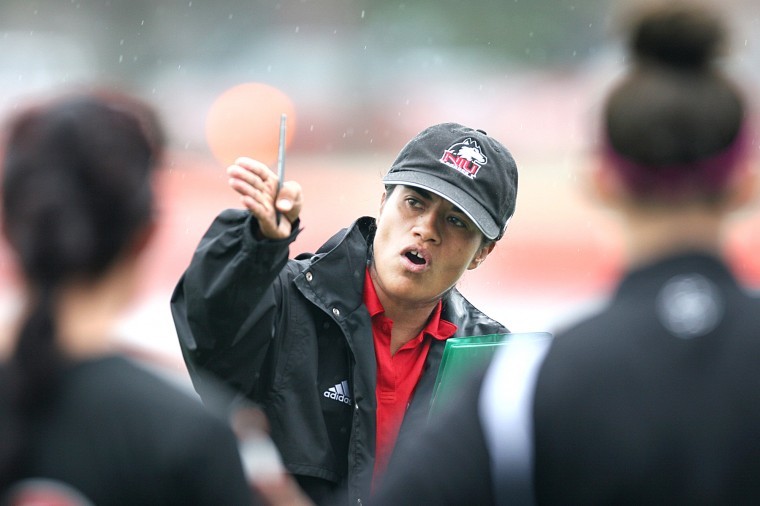Title IX affects all sports
NIU women’s soccer head coach Carrie Barker has seen the effects of Title IX both as an athlete and coach.
October 5, 2010
Since 1972, women’s athletics has been on a journey from athletic afterthoughts to prime time players.
The fact remains, however, it has only been 38 years since Title IX originally gave women the legal right to play sports at any federally-funded school, while a large segment of men’s programs have been in operation for well over a century.
Even after the 1978 mandatory Title IX compliance date, women’s programs didn’t just immediately crop up. Some schools took years after the legislation to develop a program.
NIU women’s soccer head coach Carrie Barker played collegiate soccer in the early 1990s at the University of Wisconsin-Madison. It wasn’t until Barker’s tenure as a Badger that the Big Ten made its largest strides in women’s soccer.
“My freshman year, it was only Wisconsin and Michigan State,” Barker said. “But by the time I was a senior, we had enough teams in the conference to have a Big Ten tournament.”
According to Barker, it isn’t a mystery as to why there weren’t many women’s soccer programs in the Big Ten prior to her time at Wisconsin.
“The number of programs increased because of the money,” Barker said. “For the first time, women’s programs were being fully funded, and that was huge.”
NIU Senior Women’s Administrator Dee Abrahamson has seen women’s sports at NIU develop into major players at the university. Her reasoning for the growth mirrors Barker’s.
“It’s the money,” Abrahamson said. “It’s created so many more opportunities for younger girls to play sports. More scholarships are being offered, which means more girls are playing sports longer to get an opportunity to get an athletic scholarship.”
Throughout the first four decades of Title IX, women’s collegiate athletics have enjoyed a steady progression to the top. While impressive, the path it has taken has been anything but original.
To attract top players in the late seventies, Abrahamson, head coach of the NIU softball team from 1979 to 1994 had to get creative at times.
“We brought in a lot of the best high school girls from around the area and had a sort of tryout,” Abrahamson said. “And they would pay their way to come out here for the opportunity. We didn’t have the money to bring them in, so it was good for us.”
While the tryout was effective for Abrahamson, it played out even better for Adolph Rupp. The former men’s basketball guru used the tactic to such perfection at Kentucky as head coach in the 1940s that it was banned by the NCAA in 1950. The NCAA did not begin governing women’s sports until 1980.
The talent pool of women’s collegiate athletics has expanded dramatically. With the rules of the NCAA though, some sports have become top-heavy over time.
E.C. Hill, assistant coach on the NIU women’s basketball team has seen the NCAA recruiting rules create an environment where only a few schools have the leverage to attract the best talent.
“Every kid in the world wants to go to Tennessee or UCONN,” Hill said of women’s basketball. “And while schools used to be able to call players all they want to sell them on their school, now they only have 48 hours to show the recruits what their school has to offer.”
Monopolies in college basketball are nothing new, however. Half a century ago, historic traditions of winning were built in the men’s game by John Wooden at UCLA and Rupp at Kentucky.
Obstacles passed by both the women and men suggest an eerily similar path. While women didn’t get started until 60 years after men, Abrahamson believes that the women are developing faster because they have had the benefit of hindsight.
“In one sense we have followed the same steps as the men,” Abrahamson said. “Except without some of the same mistakes that the men have made, which I think has set us up a little better.”







